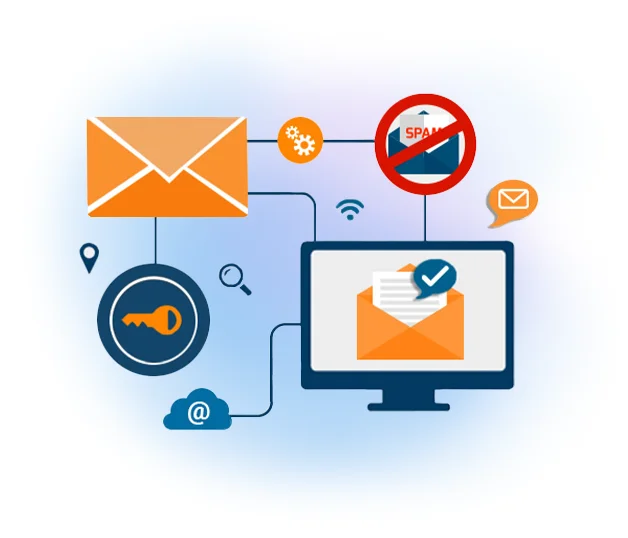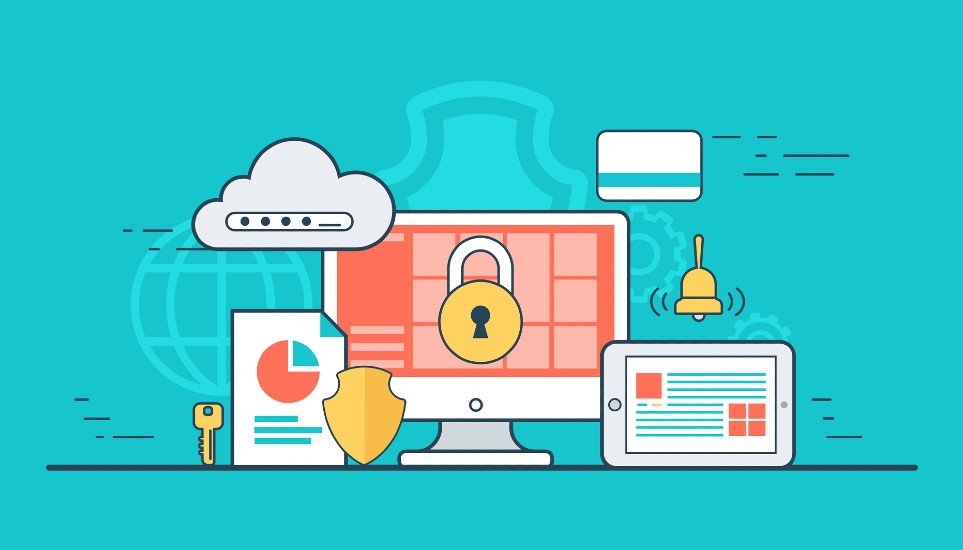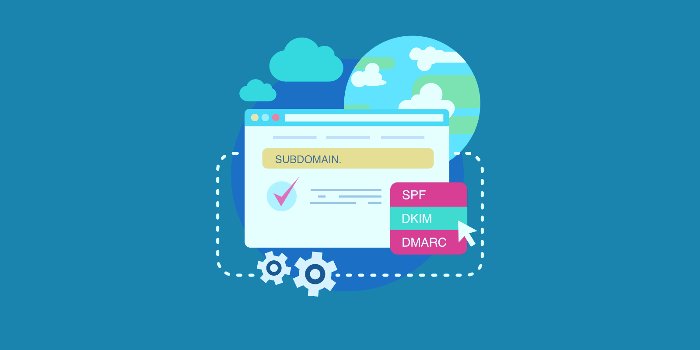Howdy! You know how much effort goes into crafting the perfect email marketing campaign. You spend hours segmenting your audience, writing compelling copy, designing beautiful visuals, and selecting the perfect call to action. But what happens when all that hard work goes to waste because your emails end up in the spam folder? It’s a marketer’s worst nightmare!
One of the most overlooked, but foundational ways to improve email deliverability is through domain authentication, and DKIM plays a huge role in that. Think of it like this: you wouldn’t send a super important letter without a signature, right? It’s the same thing with email!
So, let’s explore the amazing world of DKIM and see how it can help you conquer the inbox and boost your email marketing efforts!
What is DKIM and How Does It Work?
DKIM, which stands for DomainKeys Identified Mail, is an email authentication technique that uses a digital signature to confirm that an email was in fact sent and approved by the owner of that domain. It’s like a virtual wax seal that guarantees the authenticity of your emails.
Here’s how it works:
- Key Generation: A pair of keys, one private and one public, are generated. The private key is kept secret and used to sign your emails. Think of it like your super-secret signature! The public key, is published in your domain’s DNS records and is used to verify the signature by the recipient’s email server.
- Signing the Email: When you send an email, your email server uses your private key to create a unique digital signature that’s attached to the email header. This signature contains information about the sender and the email content and proves that the message hasn’t been tampered with along the way.
- Verification: When the recipient’s email server receives your email, it retrieves your public key from your DNS records and uses it to verify the digital signature. If the signature is valid, the email is considered authentic and is more likely to be delivered to the recipient’s inbox.

Why Is DKIM So Important For Email Marketing?
In today’s world, email is a prime target for cyberattacks. Spammers and phishers are constantly trying to trick people into giving up sensitive information. And the sheer volume of unwanted emails flooding inboxes is mind-boggling! Did you know that billions of phishing emails are sent every single day?.
DKIM adds a layer of security that helps protect your brand and your recipients.
Here’s a deeper look into why DKIM is so crucial:
- Boosting Email Deliverability: One of the biggest benefits of DKIM is that it improves your email deliverability. You see, email providers like Gmail and Yahoo are always on the lookout for suspicious emails. They use sophisticated filters to identify and block spam. When you use DKIM, you’re sending a strong signal to these providers that your emails are legitimate and can be trusted. This can significantly reduce the chances of your emails ending up in the spam folder and helps to ensure that your messages actually reach your intended audience..
- Enhancing Brand Reputation and Trust: When you consistently use DKIM, you’re building a reputation as a trustworthy sender. Recipients are more likely to open and engage with your emails if they know that they’re genuinely from you. This can have a huge impact on your overall marketing success..
- Protecting Against Spoofing: Spoofing is when someone sends an email that appears to be from your domain, but actually isn’t. This can be used to spread malware, steal information, or damage your brand’s reputation. DKIM helps to prevent spoofing by verifying the sender’s identity, making it much harder for attackers to impersonate you..
- Meeting Industry Standards: Email authentication is no longer a nice-to-have – it’s becoming a requirement. In fact, Google now requires bulk senders (those who send 5,000+ emails per day) to implement DMARC, an email authentication protocol that relies on DKIM, to guarantee delivery to Gmail addresses. So, if you want your emails to reach Gmail users, you need to make sure you have DKIM set up properly.

Unlocking the Power of DKIM: Advanced Tips and Tricks
Now that you understand the basics of DKIM, let’s explore some advanced strategies that can help you maximize its effectiveness.
- Go for Longer DKIM Keys: For optimal email security, make sure your DKIM keys are at least 1024 bits long. This makes it much harder for attackers to break them and compromise your email security. Even better, use 2048-bit long keys – the longer the keys, the stronger the protection!.
- Rotate Your Keys Regularly: Regularly rotating your DKIM keys is essential for maintaining a high level of security. Aim to rotate your keys every few months to make it even harder for malicious actors to target your email communications..
- Monitor Your DKIM Performance: Regularly monitor your DKIM performance to ensure that it’s working properly. You can use tools like DKIM checkers to identify any errors or vulnerabilities in your setup. By addressing these issues promptly, you can maintain a robust email authentication system..
- Implement DMARC: As we mentioned earlier, Google is now requiring bulk senders to implement DMARC. DMARC builds upon DKIM and SPF (another email authentication protocol) to provide even stronger protection against spoofing and phishing. Implementing DMARC at a policy of “p=reject” tells receiving servers to block any emails that fail authentication.. DMARC also provides valuable reporting data that can help you identify and address any authentication issues.
- Work With Your Email Service Provider: Your email service provider can be a valuable resource for implementing and managing DKIM. They may have tools and resources that can simplify the process and help you troubleshoot any issues that arise.
The Ultimate Email Marketing Toolkit
In addition to DKIM and DMARC, there are several other tools and best practices that can help you improve your email deliverability and get your messages into the inbox. Here are a few key strategies to consider:
- Segment and Clean Your Email Lists Regularly: Keep your email lists fresh and engaged by regularly removing inactive subscribers. This not only improves your deliverability but also helps you focus on reaching the people who are most likely to be interested in your message.
- Build a Positive Sender Reputation: Your sender reputation is a measure of how trustworthy email providers perceive you to be. A positive reputation can significantly boost your deliverability. To build a good reputation, consistently follow email best practices, avoid sending spam, and maintain a clean email list.
- Personalize Your Emails: People are more likely to engage with emails that are relevant to their interests and needs. Personalizing your emails, even in small ways, can make a big difference in your open and click-through rates.
By taking the time to implement these strategies, you’ll be well on your way to creating email campaigns that are both effective and secure.

Conclusion
Email marketing is a powerful tool, but only if your emails actually reach their intended recipients! DKIM is a vital part of ensuring that your messages are delivered to the inbox, not the spam folder. By taking the time to implement and manage DKIM effectively, you’re not only protecting your brand from spoofing and phishing attacks but also boosting your deliverability and building trust with your subscribers. So, what are you waiting for? Start using DKIM today and watch your email marketing results soar!
FAQs
What’s the difference between DKIM and SPF? DKIM and SPF are both email authentication protocols, but they work in slightly different ways. DKIM adds a digital signature to the email header, verifying that the message hasn’t been tampered with in transit. SPF allows the recipient’s mail server to verify if the sending mail server is authorized to send emails on behalf of the sender’s domain. They work best together to provide comprehensive email authentication!.
How long does it take to implement DKIM? Implementing DKIM usually doesn’t take too long. If you’re comfortable working with DNS records, you can probably set it up yourself within an hour or two. Many email service providers offer tools that make the process even easier.
What happens if my DKIM fails? If your DKIM fails, it means that the recipient’s email server couldn’t verify the authenticity of your email. This could be due to a variety of reasons, such as misconfigured DNS records or a problem with your email server. Failed DKIM can impact your deliverability and increase the chances of your emails being marked as spam. If you’re experiencing DKIM failures, it’s important to troubleshoot the issue and get it resolved as soon as possible.

